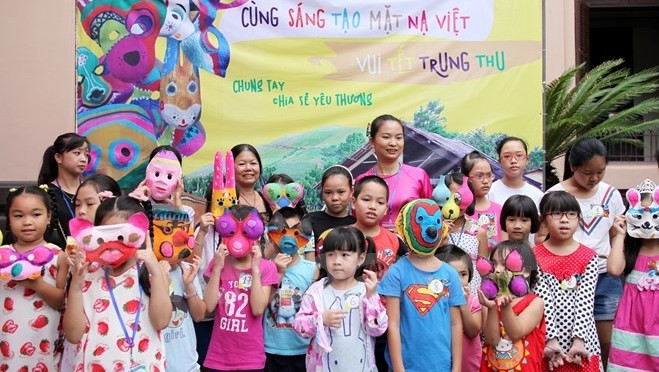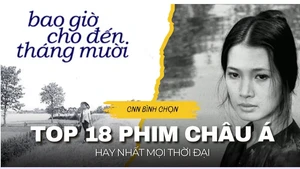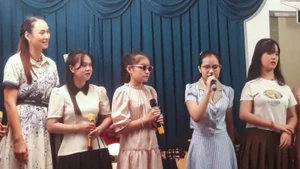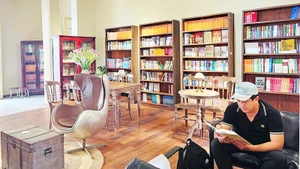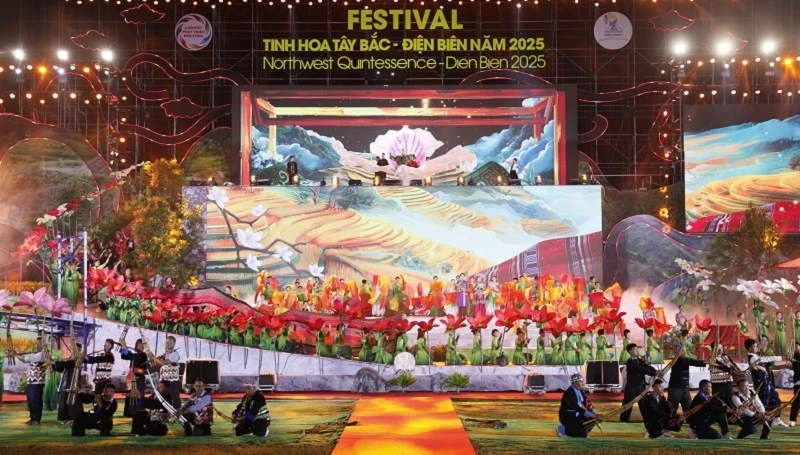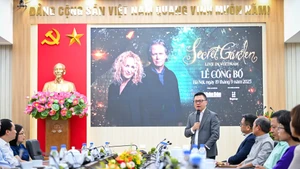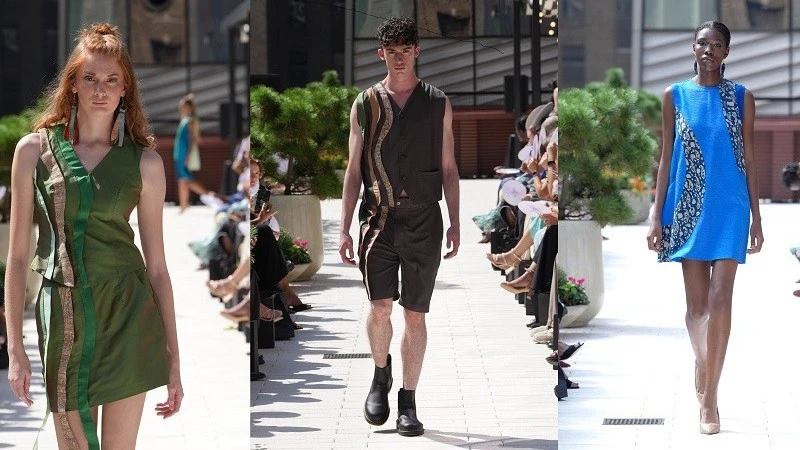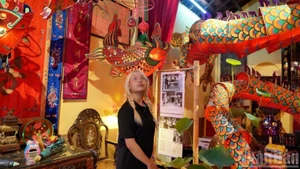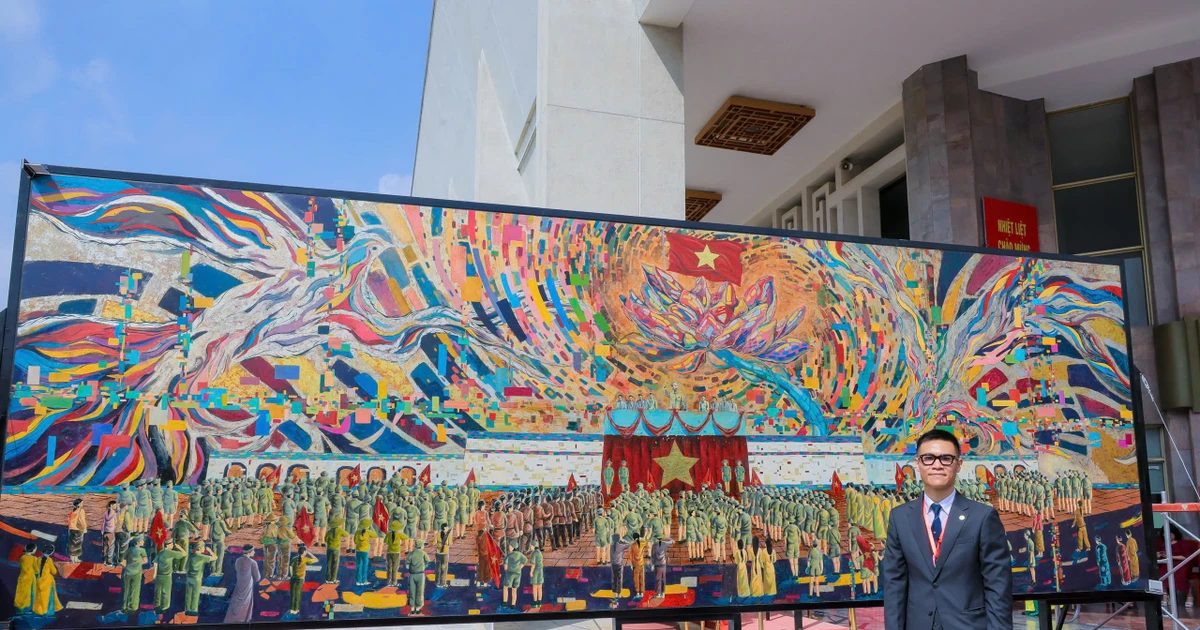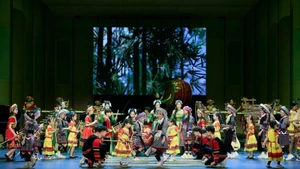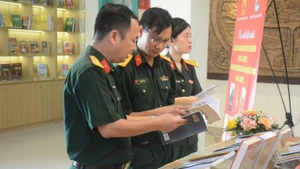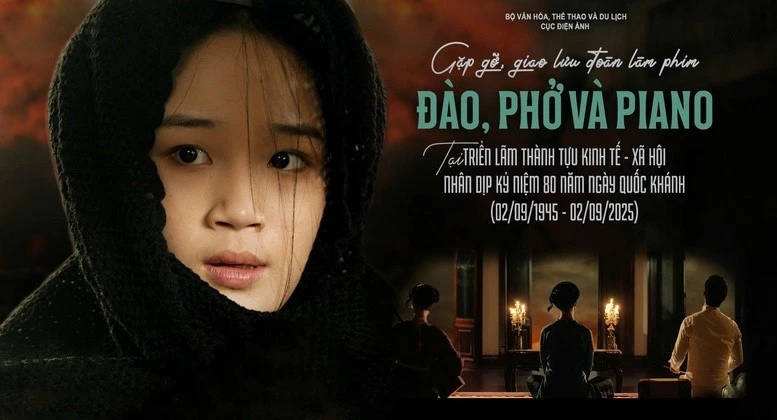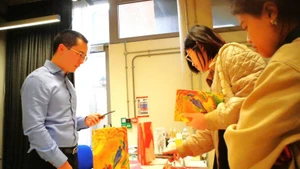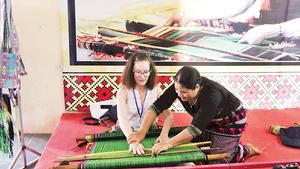The project is a joint effort of lecturers and students of Vietnam Fine Arts University. In this interview granted to Nhan Dan Weekly reporter, Trang Thanh Hien, a lecturer participating in the event, shared that the project sought to encourage children to try their hand at mask-making while reviving the traditional activity which has gradually faded within popular Vietnamese culture.
Question: There are many activities you could choose when starting a children’s project, why did you choose paper-mache mask making?
Lecturer Trang Thanh Hien: I chose to start with paper-mache masks because for me, they are a symbol of folk culture, which we have unintentionally forget about and lost in today’s society.
Last year, at painting classes I taught from my house, I instructed my students to make paper-mache masks and then presented them to children living in difficult circumstances. Although we only made around 50 masks, the impact they brought to both givers and recipients was remarkable.
I also became interested in the process and it was how the project began. Working on the masks reminded me of my childhood, when I wandered around in a land of imagination playing with modest toys.
After that, I asked my self why such traditional hand-made toys have gradually become absent in today’s life, and why they were replaced by imported toys, mostly from China, which are cheap and varied in designs but their quality and safety for children have yet to be verified.
I was so bothered by this fact that I wanted to do something. When I shared the idea with my friends, I received much support from them.
How did you prepare for the project?
We made field trips to Hang Ma craft street in Hanoi and Hao village in Lieu Xa commune, Lieu My district, Hung Yen province, where we could learn steps to make a paper-mache mask from veteran artisans.
After that, students from our university collected paper, pasteboards and tried making masks by their own hands. All of us felt very excited.
It seems that apart from artisans at handicraft villages, few people know how to make paper-mache masks.
Yes, this is true. This fact is also the motivation for us to implement this project.
It is unknown when paper-mache masks started to be made in society on Mid-autumn festival in the northern region.
In the past, parents instructed their children to create Mid-autumn masks. Children also listened to different stories relating to the masks from elders.
When the Mid-autumn festival came, children hummed folk songs in every alley. The beat of the drum and flickers of light from candles lit inside lanterns, which were designed in many shapes, created an exciting atmosphere for the ‘follow the leader’ game. Kids wore masks to play the role of rabbits, lions, the Monkey King, and various animated characters.
Time goes by, the making of masks has not been continued in families but the practice has moved to craft streets and craft villages. In Hanoi today, the paper-mache masks can only be seen at some households in Hang Luoc and Hang Ma street. Hao village now is the main supply of this product for most of localities in northern region.
The busy life in cities leaves parents with little time to help their children prepare for the Mid-autumn festival. Many of them even do not care about the origin and quality of the toys they purchase for their children, instead they buy cheap plastic Chinese toys for their kids. In your opinion, what is the reason for this?
Talking about traditional hand-make toys involves tracing back one’s memory. The “interruption” of those toys in today’s society can be traced to the changes in lifestyle.
The traditional Vietnamese culture has a strong attachment to agriculture. As Mid-autumn festival falls on spare time between harvesting crops, parents had time to make masks for their children. Mid-autumn was also an occasion for farmers to salute the moon and pray for favourable weather conditions.
The change in today’s society leads to the change in lifestyle. In big cities, most parents are very busy with work and other commitments. Maybe they themselves do not thoroughly understand the significance of Mid-autumn masks. They just know that Mid-autumn festival is a time for us to buy toys for their kids at home.
Gradually, children in big cities cannot tell the differences between a Chinese-made mask and a Vietnamese-made one.
This is a warning for us to take action to consolidate the position of traditional culture in contemporary life. I think it is better to raise children’s love for traditional toys rather than eliminating imported toys from the market.
Do you plan to continue the project over the next Mid-autumn festivals?
Yes, we do. We hope that the event will help consolidate fine arts teaching for children and enrich their knowledge on traditional culture.
Moreover, after the success at the Vietnam Fine Arts Museum (VFAM), the same event will also be scheduled at other venues in Hanoi, including Laca Arts Space, 24 Ly Quoc Su street, Hoan Kiem district on September 19, and Creativity City, No.1 Luong Yen street, Hai Ba Trung district on September 27.
The project also includes charity activities, doesn’t it?
Yes, it does. Money collected from the project, including the ticket price – VND 100,000 for each child – and money from selling masks made by the project’s team and seven famous painters, including Le Tri Dung, Le Thiet Cuong, Do Hiep, and Tran Quan, will be donated to Suoi Bau Elementary School in Phu Yen district, Son La province.
Thank you very much for your sharing!
